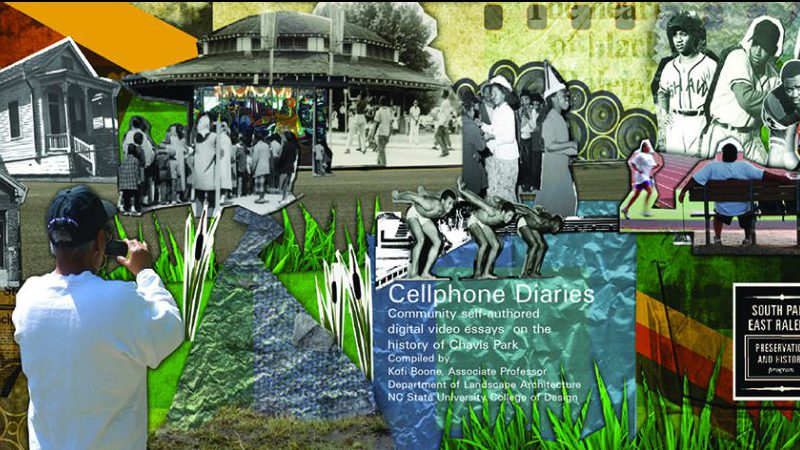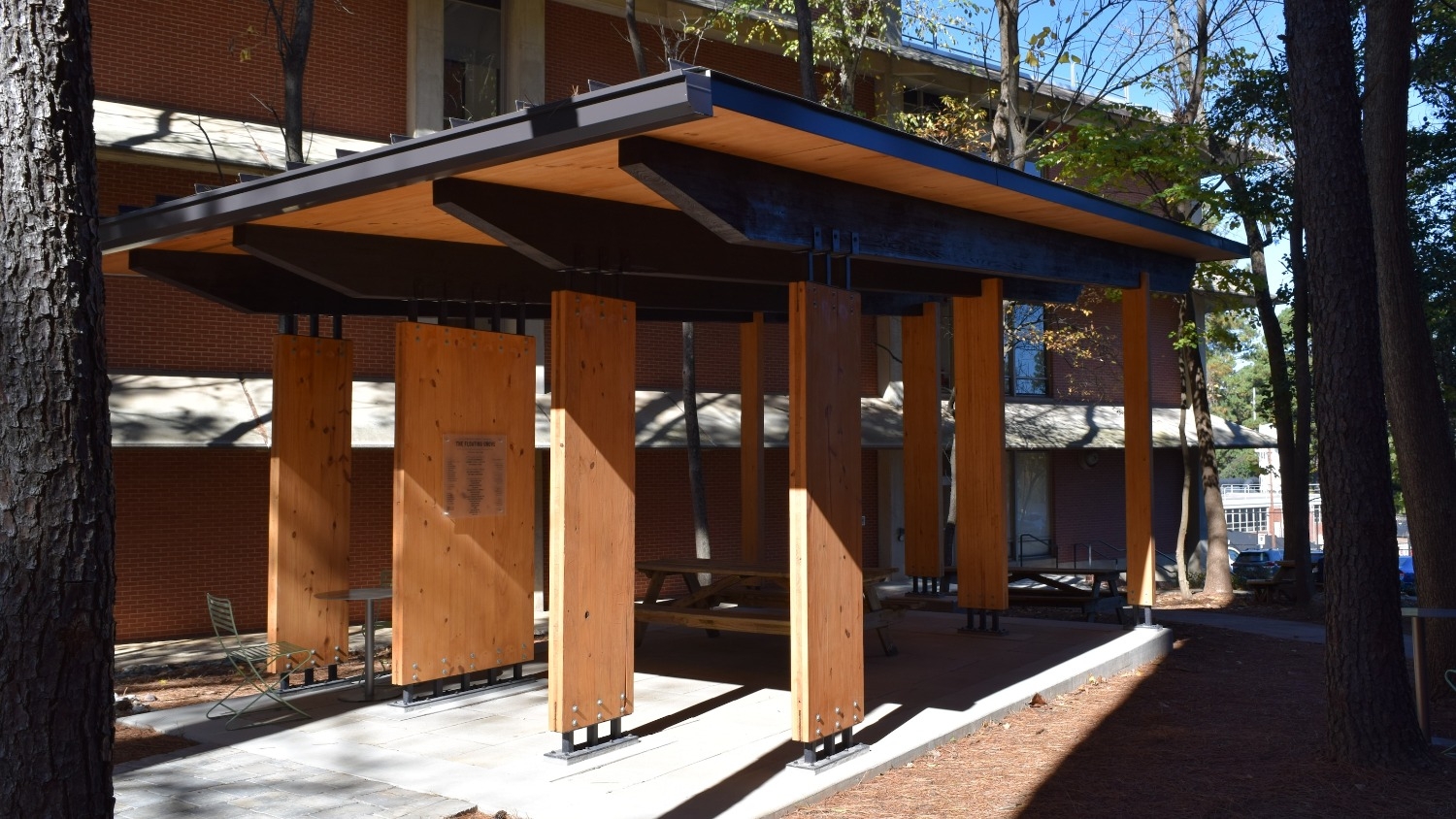Power to the Storytellers

Associate Professor Kofi Boone (Landscape Architecture) and the South Park East Raleigh Neighborhood Association co-created “Cellphone Diaries”; a process by which community residents used mobile devices to document and map their own stories of the people, places, and events that shaped their lives. Their stories have moved beyond the academic world and are informing how Raleigh interprets its past and shapes its future.
Downtown Raleigh’s reinvestment boom brings the energy of new visitors and neighbors. However, it also brings heightened anxiety in current residents. Across the nation, downtown revitalization is resulting in increased property values, tax rates, and the rapid transformation of existing neighborhoods. In the case of South Park and East Raleigh, where working class African American families have lived for over a century, residents were concerned that downtown growth meant their eventual displacement and the loss of their community history.
The South Park East Raleigh Neighborhood Association engaged faculty and students from the College of Design to create strategies for revealing the value of their history. A multidisciplinary team led by Dr. Celen Pasalar (Assistant Dean of Research) and including Dr. Robin Dodsworth (Sociolinguistics), Associate Professor Kermit Bailey (Graphic Design), and Professor Boone created diverse strategies for documenting and sharing community history. Professor Boone asked if residents could document and share their own personal narratives, and do so in the actual places where meaningful stories took place.
Professor Boone and research assistants worked with a group of neighborhood residents to use smartphones to record digital videos narrated by the residents. After a training workshop, residents ventured through their neighborhood, and especially John Chavis Memorial Park (the open space heart of the neighborhood) shooting and talking about the places that had meaning to them. The videos were geo-referenced, linked to an online map, and a summary of the video content was used to inform community design processes.
The results have taken community stories beyond the boundaries of the neighborhood. Resident narratives of Chavis Park, including references to park elements and events that no longer exist, directly informed The John Chavis Memorial Park Masterplan. The locations through the park and the neighborhood were included in the South Park East Raleigh Heritage Walk; a first phase community revitalization plan. The work was featured at the Block2 Gallery as well as The State of Things with Frank Stasio on WUNC. The method is a case study in Community Matters: Service Learning in Engaged Design and Planning (Routledge).
Working with communities and discovering opportunities to innovate tools that enable people to use their own voices and affect positive environmental change is a part of the legacy of the College of Design. “Cellphone Diaries” represents the mutually beneficially synergies made possible through effective university/community partnerships.


